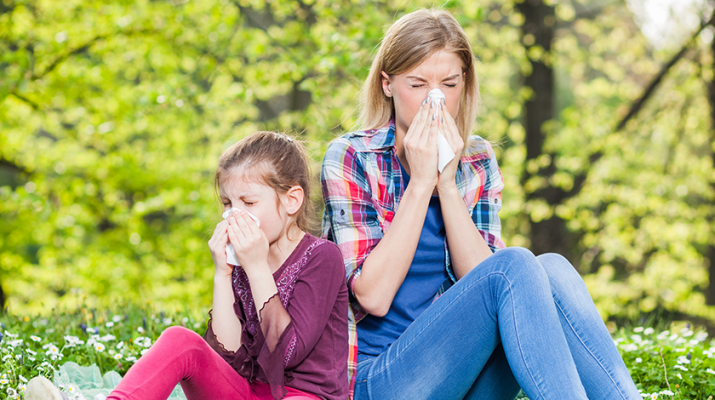It’s not just an impression — allergy incidence has gone up dramatically in the last 20 years
By Deborah Jeanne Sergeant

I recall only one child at my school with a food allergy and just one or two had seasonal or pet allergies. Now it seems like many more children suffer from allergies — and some of those, like peanut allergy, can be life-threatening.
Statistics from the Centers for Disease Control and Prevention bear out this impression. Between 1997 and 2011, prevalence of allergies have increased 50 percent.
But why? And for those with allergies, what can help?
“We are definitely more allergic to stuff,” said physician Leila Kirdani, who is board-certified in both metabolic medicine and family practice and practices at Quality of Life Medicine in New Hartford and Rochester.
She said that genes account for about 20 percent of the reason people develop allergies, and environmental factors 80 percent.
“We have genetic buffers in our system but we can take only so many assaults,” Kirdani said.
She cited a correlation between countries with higher pesticide and herbicide use and increased incidences of allergies. She added that cotton, corn and peanuts are crops which traditionally are treated with high levels of these chemicals.
“Countries that import our peanuts have high levels of peanut allergies,” Kirdani said. “Pesticides act as a nerve stimulant to cause anxiety, itchy eyes, congestion, shortness of breath and runny nose. Are you really allergic to spring or the pesticides sprayed on crops? Toxins in general wreak havoc in general, creating inflammation.”
Physician Mariah Pieretti, who specializes in allergy, asthma, and immunology at Asthma & Allergy Associates, PC in Fayetteville, said several hypotheses try to explain why more people have allergies now.
In part, doctors are better at recognizing and diagnosing allergies, she said.
She also mentioned the hygiene hypothesis, which asserts that lack of exposure to immune system stimulants — like bacteria — results in overreaction when presented with allergens. The theory holds that over-use of antibiotics and antibacterial cleaning agents, along with lack of exposure to dirt, have led to more allergic responses.
Anti-bacterial agents kill both the harmful and the “good” bacteria in the gut, for example. Circumstantial evidence supporting the hygiene hypothesis includes studies of plain sect communities, whose members manifest few allergies, and other farm families.
“Industrialized countries and agricultural communities tend to have fewer allergies with that exposure earlier in life,” she said.
But many other factors could reduce rural folks’ chances of having allergies.
To combat the effect of the hygiene hypothesis, some experts suggest using antibiotics only when necessary and avoiding anti-bacterial cleaning products. Standard soap and water do the job fine. Not everyone can live on a farm, but cat or dog ownership seems to make a difference in reducing environmental allergies.
For food allergies, earlier exposure to more foods within the first year seems to decrease the chances of food allergies, though Pieretti cautioned that children with a family history of food allergies should use caution. This is a reversal from advice given just a few years ago, which encouraged parents to wait for first exposure of common allergenic foods like peanuts.
A study in Israel showed that infants fed a peanut-based food, Bamba, by 6 months of age showed no more incidence of peanut allergies than children who wait.
Pieretti encouraged breastfeeding, but also said that parents shouldn’t avoid feeding common allergenic foods like peanut products, wheat, soy and eggs because they feel they’re protecting their children.
Babies should not eat peanuts or peanut butter because of the choking hazard. A peanut product suffices.
A couple new treatments may eventually help children with peanut allergy. Patch therapy would desensitize children through gradual, increasing exposure. The hoped outcome would be protection against accidental exposure.
“The big challenge is we want everyone to be tolerant,” Pieretti said. “The patch exposes them to peanuts all the time.”
Similar to the idea of using allergy shots for airborne allergies, oral desensitization for peanut allergies represents another method of treatment yet on the horizon.
“It introduces a small amount and gradually builds up so the kids can tolerate a dose,” Pieretti said. “But they can have an allergic reaction during treatment and it may not promote tolerance. Most allergists are not doing that yet.”

